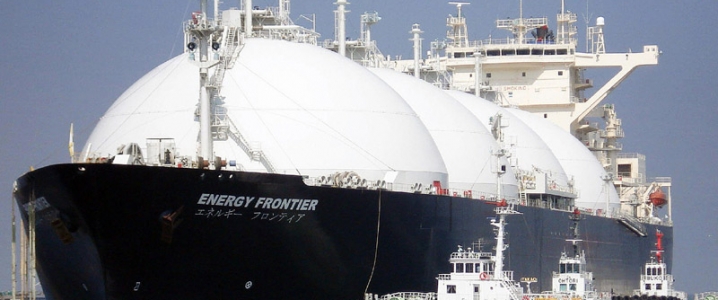The U.S. and China are closing in on a trade deal, and the result could be a lot more U.S. LNG heading east.
Reports suggest that Trump is eager to ink a deal, whether or not the content of the agreement resolves all or even most of American grievances, because he fears that the lack of a deal would sink the stock market. At this point, he views that as a domestic political threat, with the 2020 presidential campaign starting up. On top of that, the collapse of talks with North Korea have made Trump a little hungry for a win.
China, too, wants a resolution, although they didn’t want the trade war to begin with. In other words, the stars seem to be somewhat aligned in favor of a deal. But that doesn’t mean that the huge, sweeping “structural” issues dividing the two nations will be solved. Far from it. In fact, the rush to sign a trade agreement likely means that those issues will simply be pushed off. Nevertheless, a deal would signal the end of the trade war, taking one of the largest downside risks to commodity markets off of the table.
Moreover, the trade deal itself might result in a stepped up purchases of energy. The Wall Street Journal reported that an agreement may include China buying as much as $18 billion worth of LNG from Cheniere Energy. The LNG exporter saw its stock jump more than 3 percent on the news. After that report, Cheniere admitted that it had been in talks with Sinopec “for some time.” The two sides are close to a 20-year agreement.
The WSJ also reported that Chinese banks would provide some financing for Cheniere to expand its export facilities. “That would be a strong signal that there will be other (contracts) to follow,” said Charlie Riedl, executive director of the Center for Liquefied Natural Gas, told the WSJ. Cheniere is close to giving the greenlight for a sixth liquefaction train at its Sabine Pass export terminal, according to Reuters. Related: Asian LNG Prices Continue To Tumble
Sinopec is hoping to build several more import terminals in order to double its import and regasification capacity, according to Reuters. In fact, China is the main driver of global LNG demand, and sits at the center of any short-, medium- and long-term LNG forecast.
But the LNG market has suddenly hit a rough patch, in no small part because of some softening in Chinese demand.
LNG prices in Asia have been in a steady decline in recent days and weeks, recently plunging to a 19-month low. That is notable since the winter is often when demand is highest, but warmer than average temperatures in China have kept consumption for heating in check. Also, China saw natural gas shortages last winter, stemming from both cold temperatures and an aggressive coal-to-gas switch for home heating. This year, China was more prepared, and ample stocks of gas have left imports flagging.
Meanwhile, Japan recently started up five nuclear reactors that had been shuttered since the Fukushima catastrophe in 2011. Japan is the largest LNG importer in the world, so any competition in the electric power sector has direct effects on LNG markets. As those five reactors reach full capacity, Japan’s LNG imports could dip by 6 percent, according to the EIA.
Low prices are actually starting to deter buyers from signing new deals. If supplies are abundant, there is less incentive to lock oneself into a rigid long-term agreement. But developers of new export terminals tend to need those contracts in order to secure financing for new projects. As a result, new LNG projects are starting to “fall behind deadlines” while others “risk being cancelled outright,” according to S&P Global Platts. A few high-profile projects recently received a greenlight, particularly in the U.S., but those appear to be exceptions to the rule. Related: Bezos, Bloomberg And Gates Back Revolutionary Exploration Tech
“We expect several further FIDs to be taken in 2019. But this is a race with clear frontrunners, and the finish line is well in sight,” S&P Global Platts Analytics said in its 2019 outlook report. “LNG buyers remain reluctant to sign long-term contracts, and hence project developers that are able to finance a project without firm offtake agreements seem to be in the driving seat.”
More to the point, however, is that a wave of new LNG export capacity is set to come online this year, threatening to keep the market oversupplied into the early 2020s. Many projects that have not already received an FID may not move forward at all. According to S&P Global Platts and Bernstein Research, new LNG supply could “fall off a cliff” after 2020 due to the dearth of new investment. As a result, by the mid-2020s there could be a supply deficit – setting off another boom following the unfolding bust.
In the short run, the emerging U.S.-China trade deal could remove one headwind from LNG prices. China slapped a 10 percent retaliatory tariff on U.S. LNG last year, and the removal of that levy, plus an $18 billion-dollar deal for gas from Cheniere Energy, could provide a jolt to LNG markets.
However, the Cheniere-Sinopec deal may have happened anyway. “Without the trade spat, the deal should have been signed some time ago,” a source told Reuters.
By Nick Cunningham of Oilprice.com
More Top Reads From Oilprice.com:
- Russia To Defend Its Venezuela Oil Assets In ‘Toughest Way Possible’
- Oil Falls After EIA Reports Large Crude Build
- Oil Majors Are Taking Over The Permian



















Who suffers the most, the little guy, like always in the good ole US of A.